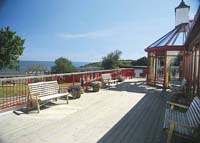Situated in the Ryedale district of North Yorkshire, the small village of Ampleforth stands on the southern fringes of the North Yorks Moors National Park, and is a perfect base for touring this area of great natural beauty. With its population of 888, Ampleforth is only a tiny village, though it has some history, and its parish church dates from Saxon times, it also has a abbey (Ampleforth Abbey), which is located about a mile from the village centre. Ampleforth is about 20 miles drive from the city of York, and nearby places include, Yearsley, Grimstone and Fritton, head into the North Yorks Moors, and you will find the hamlets of Wass and Oldstead .
See a map of Ampleforth here: http://www.my-towns.co.uk/ampleforth-map.html
And a map of the North Yorks Moors here: http://www.my-towns.co.uk/north-yorks-moors-map.html
